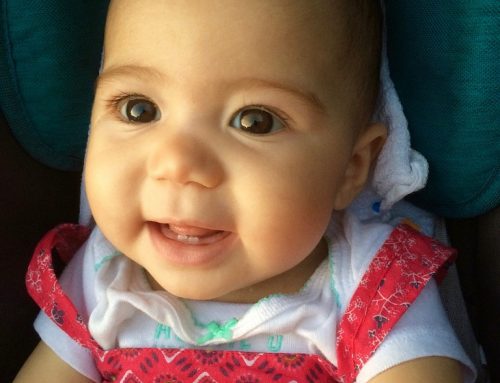When I heard from a parent in my daughter’s play-school that her child had contracted hand, foot, and mouth disease (HFMD), alarm bells rang loudly inside my skull. Panic instantly set in. Do I need to worry? Vaccinate? Or bubble wrap my child from head to toe?
Don’t get me wrong. I’m a perfectly rational being. I make organised to-do lists. I listen to concrete facts before forming an opinion. And I never read anything that starts with, ‘Spoiler Warning!’. Yet, somehow, I’m reduced to a blubbering mass whenever my kids get sick. It doesn’t help when it’s epidemic season, and kids fall ill in clusters. Suddenly, there’s a red target mark on my children, and somewhere a bow is being loaded with an arrow filled with viral germs.
Before I get lost in a sea of hysterics, let’s find out what exactly is hand, foot and mouth disease.
Hand, Foot, and Mouth disease – Signs & symptoms

Source: https://goo.gl/NBKCJm
HFMD causes tiny, red blisters to form on the feet and hands, while sores appear inside the mouth [1]. It may also be accompanied with mild fever and general lethargy. The rash on the hands and feet won’t hurt, but the mouth sores might. Other symptoms might include irritability, a sore throat and lack of appetite.
Hand, foot, and mouth disease is a mild infection, despite how sinister it sounds. So, there will be no lasting damage, thank goodness. Once the blisters dry up and peel off, the skin is as good as new; there’s no visible scarring. Most cases last around 7 to 8 days, starting with fever on the first day, followed by blisters after two days. So keep a vigilant watch.
How does hand, foot, and mouth disease spread
It’s a viral infection, so it’s contagious. Children under five years of age lack the immunity protection against the virus that is present in most adults.
Given how much children love to jump on each other or lick each other’s elbows (kids are weird), this disease could run like wildfire through a classroom of children.
It can also spread through the unknowing exchange of body fluids like saliva, snort or urine. Or in some cases, by touching a contaminated surface or an infected person.
Caring for a child suffering from HFMD
There is no medication or vaccine for hand, foot, and mouth disease. You just have to ride it out. Your paediatrician can recommend an ointment to soothe the blisters or cough medicine for sore throats.
Don’t offer food that’s hard, spicy or even too salty, please. It’s a struggle to take in anything when your mouth bears a resemblance to the seventh circle of hell.
Food recommended for a child with HFMD
The sores in the mouth can cause discomfort and trouble with eating. Expect a reduced appetite when the child has HFMD. Try to include food items that are soothing. You can try the following:
- Dahi
- Soft fruits
- Cool porridge
- Cold beverages
- Chilled soup
- Ice cream (the bright side to falling sick!)
My kids hardly eat when they’re sick. Which is fine. When they feel better, and their appetite is back, I’ll be waiting with a plateful.
The best thing to do is to entertain your kids. Read their favourite books, play their favourite music, put on a puppet show and do whatever it takes to distract them from their temporary misery.
Are you sure it’s not measles
Here is how you can make sure your child has HFMD, not chickenpox or measles.
Measles: Full body rash that looks like flat red spots, accompanied by very high fever.
Chickenpox: The itchy rash that appears in batches. So you get a new crop along the older spots.
Still not sure? Check with your paediatrician right away.
Preventing hand, foot, and mouth disease
You don’t want your child to contract hand, foot, and mouth disease? Precaution is the only way to avoid HFMD. Hygiene is key. Clean hands, clean fingernails, clean home surfaces … you get the drill :-). Also, encourage your child, especially during the outbreak of HFMD, to offer flying kisses instead of kissing or hugging people :-). The lesser the physical contact, the better, to prevent the spread of the infection.
Although the chances are slim for a child infected with HFMD to get the disease again, it is possible. But with a little know-how and precaution, you can keep your kids safe and comfortable, without bubble wrapping them.
Conclusion
Hand, foot, and mouth disease is a harmless viral infection. Usually, kids under the age of 5 years are susceptible to it. Characterised by visible symptoms of blisters on the hands and feet and sores inside the mouth.
HFMD is highly contagious, and there is no vaccination for it. While it is mostly harmless in the long run, HFM can cause discomfort, fever and weakness. Maintaining hygiene and minimising physical contact usually help to reduce the chances of contracting HFMD.





Helpful article
Thank you 🙂
great work. keep it up! love your writing style.
Thanks from Team AnuChiAai :-).